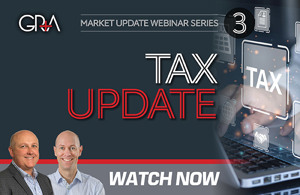
If you are migrating to New Zealand, one item you should add to the top of your ‘to do’ list is understanding the potential tax implications your migration may cause, not only in New Zealand but also in the country you are emigrating from.
Your tax obligations will be different depending on whether or not you are deemed to be a New Zealand tax resident. At the very least, any income you earn here must be declared to the New Zealand Inland Revenue Department (“IRD”, which is our tax authority agency).
There are several tax regimes to get your head around, and of course you are best to seek advice from a tax practitioner who specialises and is experienced in dealing with international tax matters. However, it’s wise to have a general understanding of the common tax implications so you know what to watch out for when seeking professional guidance – and so you don’t miss out on any potential tax benefits that you are eligible for.
There are five common tax regimes that generally apply upon migration to New Zealand, and these are briefly discussed below.
Before we dive into these regimes, it is important to note that this article only contemplates New Zealand tax residency of natural persons / individuals. Different residency laws apply to different entities, such as companies and trusts.
1. Tax Residency
Individuals can trigger New Zealand tax residency in one of two ways.
Time-based test
The first is the number of days you spend in this country. If you are physically present in New Zealand for more than 183 days in any 12-month period, you are deemed to be a New Zealand tax resident. These days do not have to be consecutive, nor do they need to follow any calendar or tax year; rather it is assessed on a rolling 12-month basis.
Permanent Place of Abode (“PPOA”)
The second is if you have a PPOA here. This is not a black-and-white assessment like the time-based test discussed above. Instead, it is an opaque assessment that considers the availability of a dwelling and your ‘ties’ to New Zealand. If you have a dwelling here and your ties are strong enough, you can be deemed to have a PPOA in New Zealand and therefore be considered a New Zealand tax resident.
Various factors are considered when assessing an individual’s ties to New Zealand, including:
• whether you own a home
• whether you habitually stay / live in a particular property (this doesn’t necessarily have to be one you own – it could be a rental or a family member’s property)
• where your immediate family reside
• vehicle ownership
• personal property
• employment
• investments
• memberships
So, for example, if you own a house that you live in when you are here, or could live in when you are here, this will influence whether you have a PPOA.
If you are a New Zealand tax resident because you trigger either the time-based test or PPOA test, you are required to declare both your New Zealand and your worldwide income to the New Zealand Inland Revenue Department and pay tax on it.
If you are not a New Zealand tax resident, you are only required to declare your New Zealand sourced income to the IRD, e.g. rental income from a property owned in New Zealand. You may also have to declare your New Zealand sourced income in the country where you are domiciled.
2. Transitional Tax Residency Eligibility
Transitional residents can get a temporary tax exemption from paying tax in New Zealand on most types of overseas income. This exemption lasts for four years and is designed to give you the chance to get your head around the New Zealand tax implications of your overseas investments.
A transitional resident can be a new person immigrating to New Zealand, or a New Zealander returning home after being a non-tax resident of New Zealand for more than 10 years.
There are some conditions that apply:
• Transitional residency only applies to individuals (i.e. it does not apply to trusts or companies).
• You must not have been a New Zealand tax resident at any time in the previous 10 years.
• You will not be eligible if you have been a transitional resident in New Zealand before (you can only qualify for this once).
• You will lose you eligibility if you or your partner apply for Working for Families tax credits.
Note that you can opt out of becoming a transitional resident. This may be of benefit to you if you have large tax losses on overseas investments that you would like to claim.
3. Non-resident Withholding Tax (NRWT) and Approved Issuer Levy (AIL)
If you are a New Zealand tax resident with offshore debt (and you are not a transitional resident), the interest you pay will be subject to the non-resident withholding tax rules. Under these rules, you are required to pay a percentage of the total interest paid to the overseas lender as NRWT to the IRD. The rate depends on the tax treaty between New Zealand and the country where you have borrowed the funds, and is commonly 15% or 10%, but can be reduced to 5% or even 0%.
The basis for this regime is to ensure the protection of the New Zealand tax base. Without the introduction of the NRWT regime, interest payments made to offshore lenders would not be taxable in New Zealand.
Like all tax regimes, there are exemptions. A common exemption that applies to the NRWT regime is the onshore branch exemption. This exemption applies where your foreign lender also operates in New Zealand through a branch. However, even if your lender operates in New Zealand, it doesn’t necessarily mean it has a branch here. This is a specific term, and the bank must be registered as a branch with the Reserve Bank of New Zealand.
An alternative to NRWT is the approved issuer levy (AIL). This reduces your withholding tax rate to 2% of the interest. You need to apply for approved issuer status with the IRD and certain criteria must be satisfied to be eligible for this regime.
4. Financial Arrangements
New Zealand’s financial arrangement rules are another important regime to be aware of. Again, you are exempt from this regime for the duration of your transitional residency period if you qualify as a transitional resident.
These are complicated rules but broadly apply to any arrangement where you give or receive money now, in return for a promise to receive or give money back in the future. They therefore apply to debt instruments and securities, such as loans, interest-bearing bank accounts, and bonds.
Common examples of financial arrangements are foreign debt or foreign cash. In both examples, if you are caught by the financial arrangement rules you will be required to declare any foreign exchange movement on these amounts in your New Zealand tax return (i.e. if there is a gain or a loss due to the strengthening or weakening of the New Zealand dollar, it will be taxable / deductible).
There are some exemptions to the financial arrangement rules for smaller investors, but if you get this wrong you will face penalties with the IRD. So, make sure you obtain advice from a qualified tax practitioner who fully understands these rules.
5. Foreign Investment Funds (FIFs)
The FIF regime is a regime designed to target New Zealand residents investing in foreign companies. Some regard it as a type of wealth / quasi-capital gains tax regime, but it is not all bad news. Occasionally the FIF regime results in a better outcome for taxpayers. This is because if you are subject to the FIF regime, you are no longer taxed under ordinary principles (i.e. taxable on dividends when received). Instead you must apply a FIF calculation method to determine the tax liability of your FIF investments. These formulas have the result of create a ceiling on the maximum amount of tax you can pay.
Similarly to the NRWT and financial arrangement rules discussed above, if you qualify as a transitional resident, you are exempt from the application of the FIF rules for the duration of your transitional residency period.
The FIF rules mostly apply to interests of less than 10% in foreign companies and managed funds (that are not PIEs, which are taxed under PIR rules) but can also apply to some foreign superannuation schemes and foreign life insurance policies.
If you have a “FIF investment”, you may have taxable income to declare, even though you may not have received any income or gain directly.
There are several methods for calculating FIF income, the most common being the Fair Dividend Rate “FDR” and Comparative Value “CV” methods. The FDR method taxes FIFs at 5% of the opening value, whereas the CV method taxes you on the gain of investment during the relevant tax year.
There are numerous exemptions from the FIF rules. One of the most common is the de-minimis exemption that applies to FIFs with a cost base (not value) of $50,000, but this exemption only applies to natural persons, not trusts or companies.
Make sure you talk to your accountant about your foreign investments so they can advise you on what you need to disclose, and which calculation method is most suitable.
Summary
Before making the move (or return) to New Zealand, get clear on your tax obligations and the potential benefits available to you. Get this stuff wrong, and it could cost you – either in you paying tax that you don’t have to, or not paying enough tax and risking interest and penalties with the IRD on any tax shortfall.
At GRA we are experts in dealing with the tax implications of migrating to New Zealand, so reach out if you need advice in this area.

Quade Fraser
Client Services Manager
Did you like this article? Subscribe to our newsletter to receive tips, updates and useful information to help you protect your assets and grow your net worth. We're expert accountants providing expert advice to clients in NZ and around the world.
Disclaimer: This article is intended to provide only a summary of the issues associated with the topics covered. It does not purport to be comprehensive nor to provide specific advice. No person should act in reliance on any statement contained within this article without first obtaining specific professional advice. If you require any further information or advice on any matter covered within this article, please contact the author.
Comments
Testimonials
I thoroughly enjoyed last night's seminar. It was the shortest 3 hours of my life. Matthew was incredibly knowledgeable and handled his audience well. I am certain that the rest of his team is like that. - Terrence I, April 2018
Property 101by Matthew Gilligan
Investing in residential property?
Put this at the top of your reading list.
If you're investing in residential property, seeking to maximise your ability to succeed and minimise risk, then this is a 'must read'.
Matthew Gilligan provides a fresh look at residential property investment from an experienced investor’s viewpoint. Written in easy to understand language and including many case studies, Matthew explains the ins and outs of successful property investment.
- How to find the right property
- How to negotiate successfully
- Renovation do's & don'ts
- Property management
- Case studies and examples
- and much, much more...








































